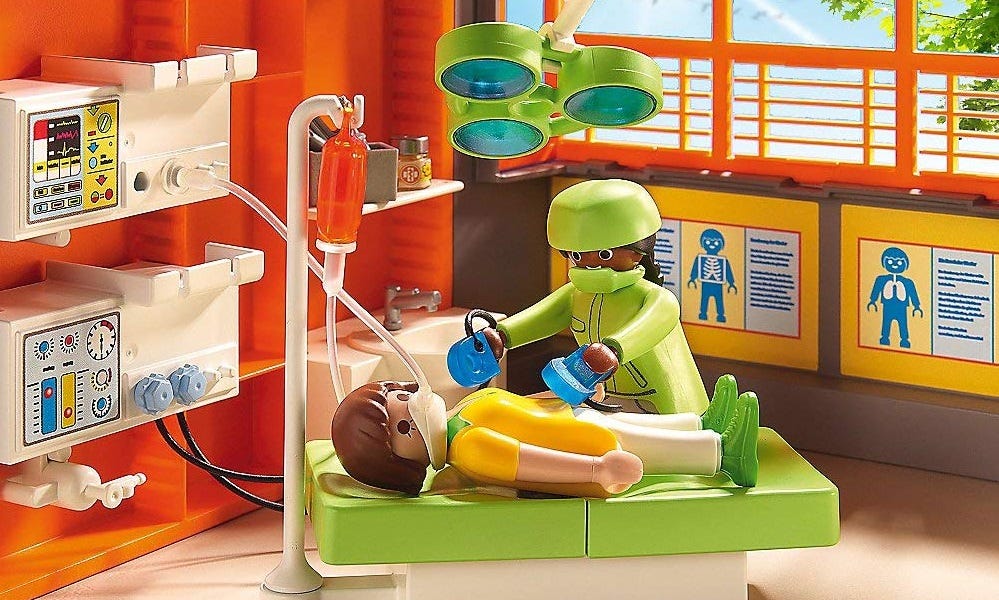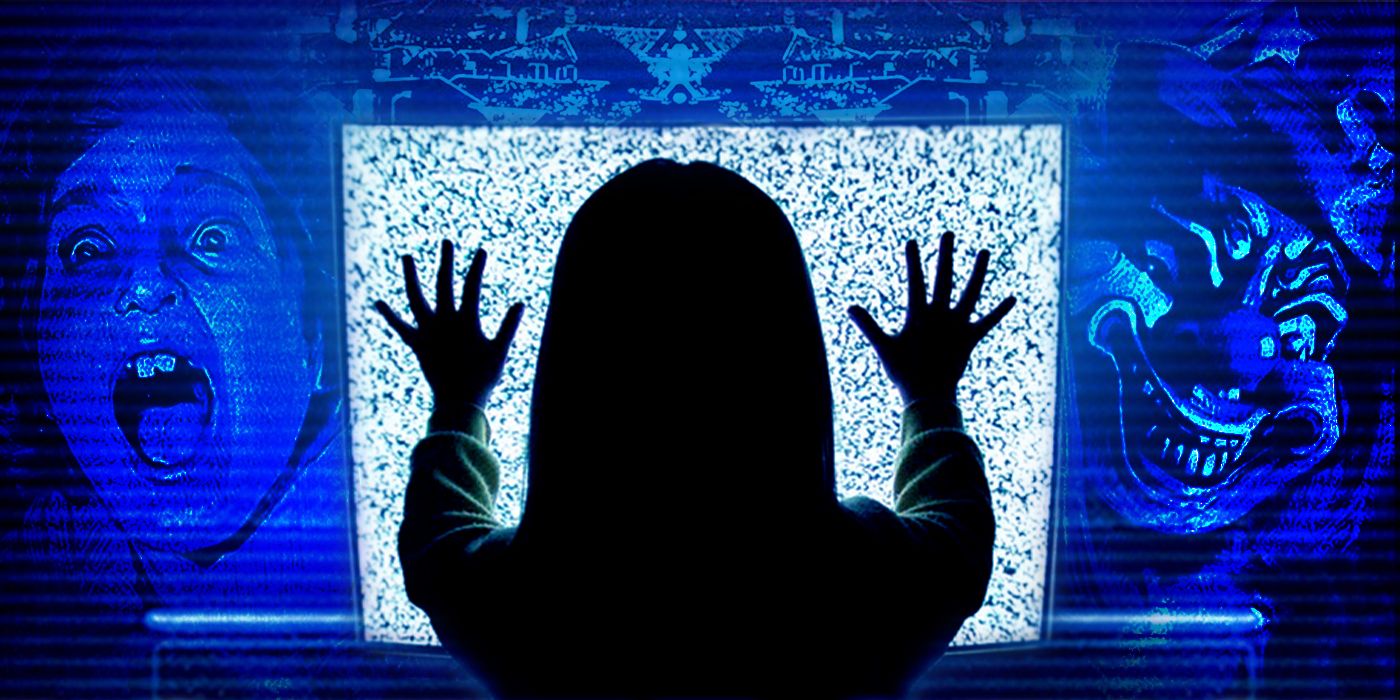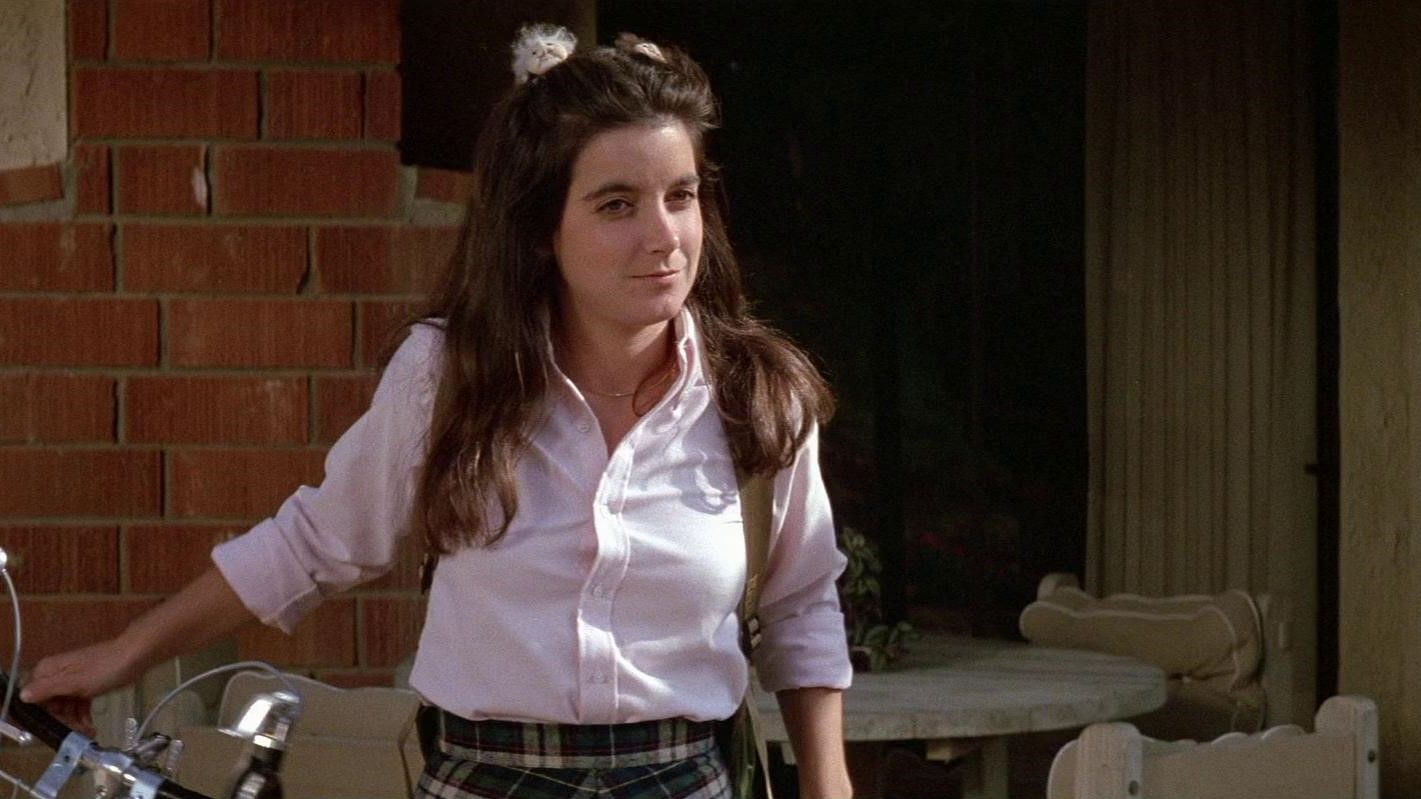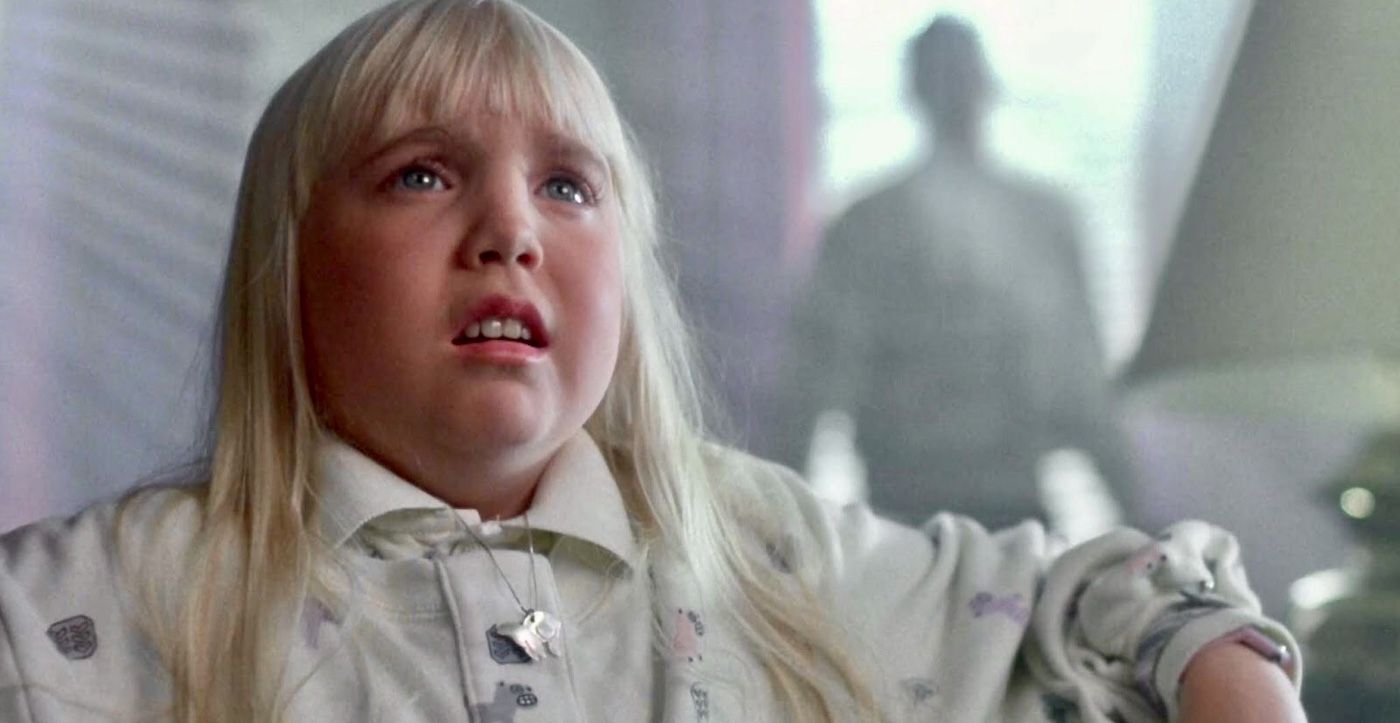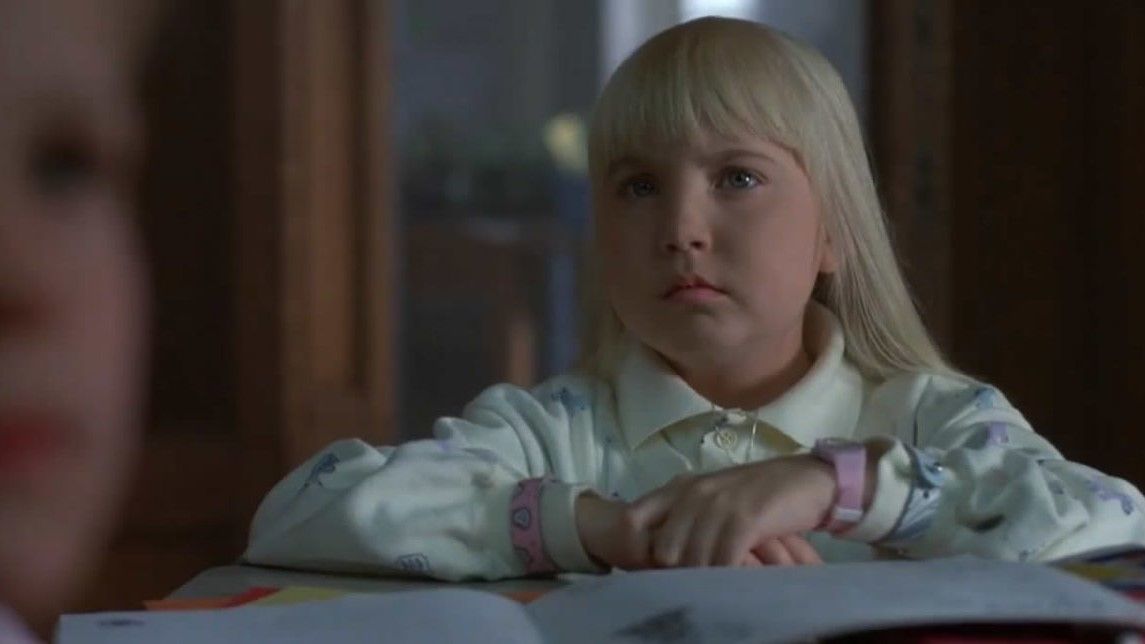Accidents, mistakes, and unfortunate turns of events are common on any Hollywood set, but when cast and crew members regularly die and bizarre circumstances cause creepy or inexplicable coincidences across three separate films, it begins to raise the question: is this franchise cursed? Such was the case with the original Poltergeist trilogy, a series of films well known for the ghoulish and macabre circumstances that surrounded it, including multiple deaths, mysterious malfunctions, and the questionable use of human remains. But were these films truly cursed, or were the overworked creatives involved simply influenced by the films’ spooky subject matter and seeing things? This article will present the unusual incidents and let its readers come to their own conclusion. But be forewarned: this piece will discuss real world abuse, violence toward women, and the tragic deaths of several people.
Poltergeist (1982): Hauntings and the Death of Dominique Dunne
The original 1982 Poltergeist film is undoubtedly the best in the series. It’s a clever mix of Steven Spielberg storytelling and chilling special effects that proves to be an effective horror movie even by today’s standards. But it might surprise the reader to learn that some of the film’s supernatural content was similar to events in the real world. In order to give the film a more realistic take on haunted houses, Spielberg told the screenwriters, Michael Gris and Mark Victor, to speak with working psychics and ghost hunters for inspiration, a practice continued in the film’s sequels, which may account for the prominent role of parapsychologist and spirit guide characters in the series.
Zelda Rubinstein, who played the series’ iconic spirit medium Tangina, reported that she was no stranger to the supernatural even when out of character. One story she told involved her dog visiting her in a dream while she was away from home. According to Rubenstein, the dog simply wished to say goodbye. When Zelda awoke she received a phone call from home informing her that her dog had passed away. This sort of strange premonition became something of a recurring theme across the film trilogy, and Zelda was not the only cast member who experienced something otherworldly.
JoBeth Williams, who played the Freeling family matriarch Diane, reported that she once stayed at a home where the bed seemed to be shaking, only to be later told by the homeowners that it was caused by ghosts. While filming Poltergeist, Williams would often come home to find her paintings and wall-hangings askew. She would fix them and head off to set, but when she returned home, they would all be tilted again. This especially felt like the act of one of the trickster poltergeists in the film, and Williams worried that something or someone was trying to warn her not to do the film. Similarly, James Kahn, who wrote the film’s promotional tie-in novel, experienced something abnormal while working diligently in Steven Spielberg’s office. As Kahn wrote about thunder and lightning, a thunder crash and lightning occurred right outside the window. The lights flickered and the back of the air conditioning unit burst off and struck Kahn from behind. After a few minutes, the lights flickered again and all of the video games in the office started playing. It was also reported that Dominique Dunne, who played elder daughter Dana Freeling, once witnessed a bookshelf tip and toss books around the room. Compared to the tragedy that found Dunne later, this was barely significant.
Dunne’s boyfriend, John Sweeney was quick to anger and violence, reportedly not the sort of person friends or acquaintances wanted to agitate. One account suggests that after the success of Poltergeist, a fan complimented Dunne on the street, which enraged Sweeney and resulted in Sweeney attacking the fan. Sweeney’s rage and violent behavior escalated until Sweeney began abusing Dunne physically. Dunne rightfully decided to dump Sweeney, but Sweeney was obsessed with her and refused to let her leave him so easily. A restaurant chef, Sweeney thought he could win Dunne back with a gift, a chocolate mask carved in Dunne’s likeness. Dunne rejected him and turned him away again, which led to an argument in front of Dunne’s home.
Dunne had been rehearsing lines with actor David Packer when Sweeney arrived, and fearful of violent confrontation, Packer opted to try to drown out the argument by loudly blaring the Poltergeist soundtrack. When he heard Dunne scream as though she had been attacked, he called a friend to warn him that if he died it was Sweeney who committed the crime. Packer then called the police, who chastised him for failing to intervene. While Packer was inside, Sweeney grabbed Dunne by the throat, dragged her to the side of the house and choked her until she was unconscious. When police finally arrived, Sweeney held up his hands, then led them to Dunne’s body, which he proceeded to lay down beside. Though Dunne was still technically alive, the hospital pronounced her legally dead a few days later.
Poltergeist II: The Curse Grows
The brutal and senseless murder of Dominique Dunne was the inciting incident for rumors that Poltergeist was cursed. These rumors failed to deter the film’s writers from signing on for a sequel, though production was far from smooth sailing. Things slowed to a dead halt when a malfunctioning creature effect known as The Vomit Monster continually failed to work, causing actor Craig T. Nelson to pretend to throw up a disgusting practical effect for over 10 hours. When director Brian Gibson finally decided he had gotten the shot, the cast and crew went home for the day. The next morning they discovered that something had damaged the film, rendering it unusable, meaning they would have to endure the whole hellish ordeal again. This was not the worst problem on-set; the film’s finale was set in a cave, and the constructed set was small and uncomfortable, causing actors to scratch their heads and lighting rigs to topple over. When Nelson complained about the eerie and unsettling vibe of the cave set, actor and experienced shaman Will Sampson inspected the set for negative energy, deciding that it was coming from the prop skeletons. This was when the cast learned that some “prop” skeletons were actually human remains that had been used to deepen the film’s realism. Sampson asked if he could exorcise the set, and after being given permission, Nelson reported that production issues immediately stopped.
Death hung over the production in other ways. Julian Beck, who played the film’s antagonist Kane, was dying of colon cancer while filming the movie and aware of that fact. His frightening performance seemed to conjure up feelings of dread that cast and crew alike found deeply unsettling. Shortly after production wrapped, Beck passed away. In another tragic circumstance, Will Sampson later died due to complications during a heart and lung transplant. Craig T. Nelson visited Sampson’s grave and recalled an uncanny moment when the oppressive drone of cicadas in the trees suddenly stopped as Nelson spoke aloud to his deceased friend. Young star Heather O’Rourke, who played Carol Anne Freeling of “They’re he-e-e-re,” fame, also came down with a mysterious illness, something that would eventually lead to her own death.
Poltergeist III: The End of the Curse?
The third movie in the Poltergeist franchise was a low point for both the series and many of those involved. Heather’s mysterious illness was diagnosed as Crohn’s disease, but any discomfort she felt did not hold her back from agreeing to reprise her role as Carol Anne a third time. Zelda Rubinstein returned as well, but none of the other cast members were interested. Special effects malfunctions and accidents abounded on this set as well, with an “underwater catapult” device going awry and shredding a stuntman’s shins and a bit of clumsiness resulting in director Gary Sherman breaking his leg. The film was set and produced in Chicago’s John Hancock Tower, which was no stranger to death, as over a hundred builders had died during its construction. One more death occurred when the building engineer assigned to help the film’s production staff was found dead in his chair mid-shift, though no foul play was suggested.
Rubinstein received another psychic premonition similar to the one she’d had previously about her dog, but this time the sudden shock she received while on set alerted her to the fact that her mother had died. A strange anomalous photograph of Rubinstein shows the woman haloed by bright white light, which made the director think that the photo may have been taken at the exact moment of her mother’s death.
Another special effect gone haywire meant that a supposedly controlled explosion became a raging, uncontrollable fire that sent on-set firemen running for their lives and left one maintenance worker trapped in the building. A particular brave stuntman went back in to rescue the worker, managing to rescue the cameras and film as well, for which the director dubbed him “a hero.” The real tragedy occurred when the film went on hiatus for several months. As she was getting ready for school, Heather O’Rourke noticed that she had difficulty swallowing. Her mother found that Heather’s hands were cold. They took Heather to the hospital, but due to a congenital abnormality in her intestines, Heather died of septic shock. In another strange moment of premonition, Heather’s mother recalled seeing her daughter appear before her while her daughter was still in the other room with the doctors. She reportedly said to her mother, “I’m not coming back.”
Curse or Coincidence?
Whether one believes in otherworldly spirits, occult occurrences, or demonic curses, it is clear that the Poltergeist films were plagued by misfortune. The heartbreaking deaths of its actors, the dangerous and frustrating technical problems, and the self-inflicted blunder of using real skeletons in lieu of replicas all culminate into a series of deeply traumatic experiences. Though there may be some excitement in horror stories like these, it would be a far better world if such things were relegated to movies and the pages of fiction.












